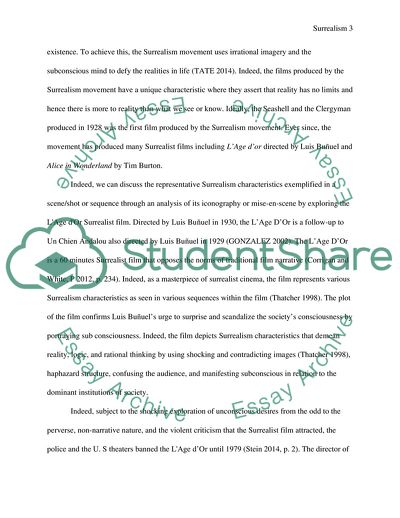Cite this document
(Analysis of Surrealism Movement in the History of Cinema Coursework, n.d.)
Analysis of Surrealism Movement in the History of Cinema Coursework. https://studentshare.org/visual-arts-film-studies/1829919-provide-a-critical-analysis-of-a-sceneshot-or-sequence-from-a-film-produced-by-a-movement-in-the-history-of-cinema
Analysis of Surrealism Movement in the History of Cinema Coursework. https://studentshare.org/visual-arts-film-studies/1829919-provide-a-critical-analysis-of-a-sceneshot-or-sequence-from-a-film-produced-by-a-movement-in-the-history-of-cinema
(Analysis of Surrealism Movement in the History of Cinema Coursework)
Analysis of Surrealism Movement in the History of Cinema Coursework. https://studentshare.org/visual-arts-film-studies/1829919-provide-a-critical-analysis-of-a-sceneshot-or-sequence-from-a-film-produced-by-a-movement-in-the-history-of-cinema.
Analysis of Surrealism Movement in the History of Cinema Coursework. https://studentshare.org/visual-arts-film-studies/1829919-provide-a-critical-analysis-of-a-sceneshot-or-sequence-from-a-film-produced-by-a-movement-in-the-history-of-cinema.
“Analysis of Surrealism Movement in the History of Cinema Coursework”. https://studentshare.org/visual-arts-film-studies/1829919-provide-a-critical-analysis-of-a-sceneshot-or-sequence-from-a-film-produced-by-a-movement-in-the-history-of-cinema.


